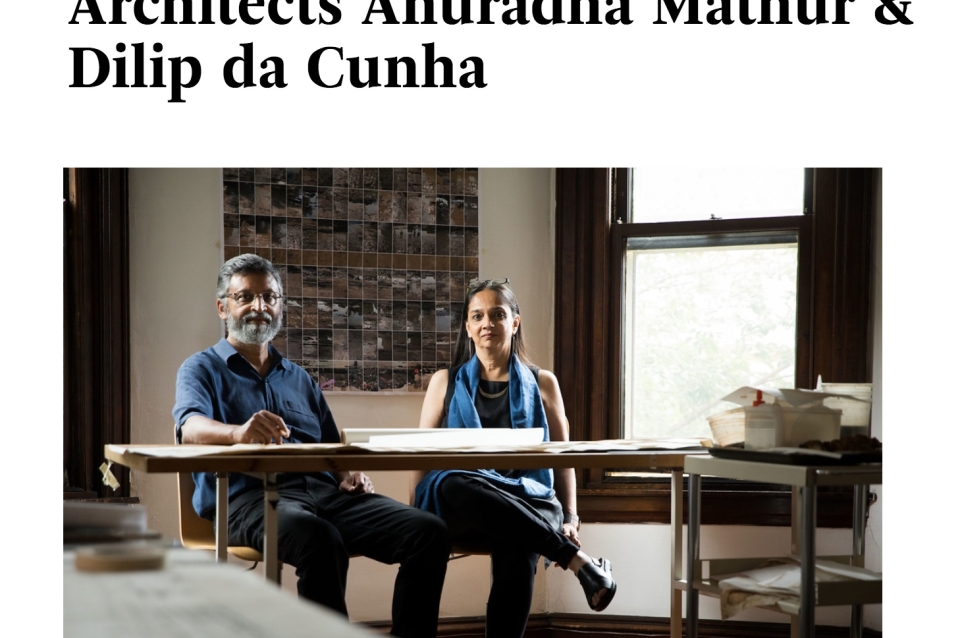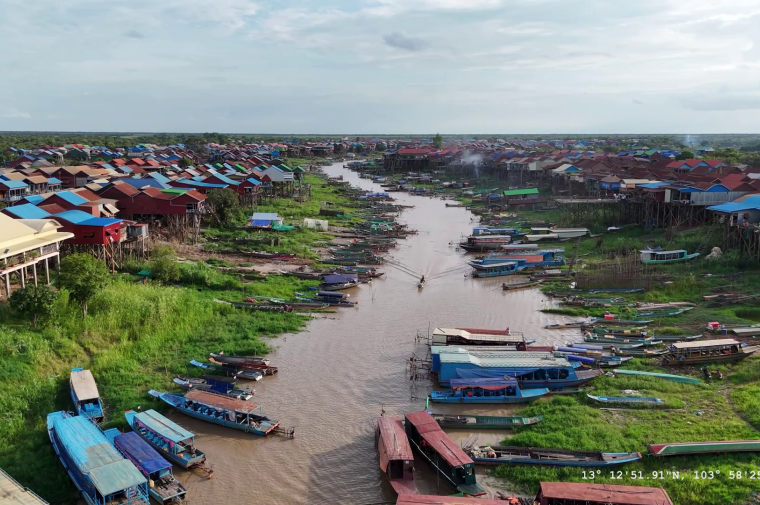May 23, 2018
Stuart Weitzman School of Design
102 Meyerson Hall
210 South 34th Street
Philadelphia, PA 19104
Get the latest Weitzman news in your Inbox
Areas
Anuradha Mathur, Professor of Landscape Architecture, and Dilip da Cunha were featured on Pew Fellows of the Week.
How did you come to the field of landscape architecture? What drew you to this work?
Trained as architects, we both came to landscape architecture with a shared sense of it being a ground of inquiry into design. We see it setting the terms by which places (and peoples) are measured, articulated, and transformed even before a project is conceived or the spade hits the dirt. This, of course, is not how the profession necessarily sees itself. To most landscape architects, landscape architecture is a practical discipline with a place in the process of designing built environments. However, each of us came to landscape architecture by a different route. Anuradha came to the field through education via a Masters in Landscape Architecture, a choice driven by the perceived need to situate architecture. Dilip came to it through his inquiry into cities, design, and planning in the course of pursuing his PhD although we like to think that it was through marriage!
Your work imagines new possibilities for design of the built environment, and your interest in how water and landscapes are visualized has taken you to diverse terrains around the world. How do you approach bringing together your research of these landscapes and design to explore the complexity of places?
Our method of inquiry operates between three environments: field, archives, and studio. Each propels us toward the other two in a bid to celebrate and draw out the material complexity and inherent dynamism of places. In the field, we walk, draw, photograph with an eye and ear tuned to meter and movement, material and horizon; but as much to rupture and dissonance. We seek out things that defy boundaries. Water is the most common of these things. It refuses to stay behind a line drawn to separate it from land, prompting us to question not just who drew this line and where they drew it, but why they saw drawing it as necessary in the first place. It keeps us from accepting flood as a natural event. But water is only the first of many things that defy boundaries. People and practices, particularly in the so-called “developing world” do the same. Their defiance is too easily described as “informal,”’ “underdeveloped,” or “otherness.” We turn the focus on the presumed necessity of the line and the difference it calls out.
It leads us to the archives where we extend the present to include a past that drew lines of separation, enforced them, and made them the ordinary and the everyday. In the studio, we re-visualize place, make sense of our traverses and transgressions in the field and the archives, and venture new possibilities that push against the limits of the real in a bid to be inventive yet effective.
You can read their full interview on The Pew Center for Arts & Heritage website.


 Expand Image
Expand Image


